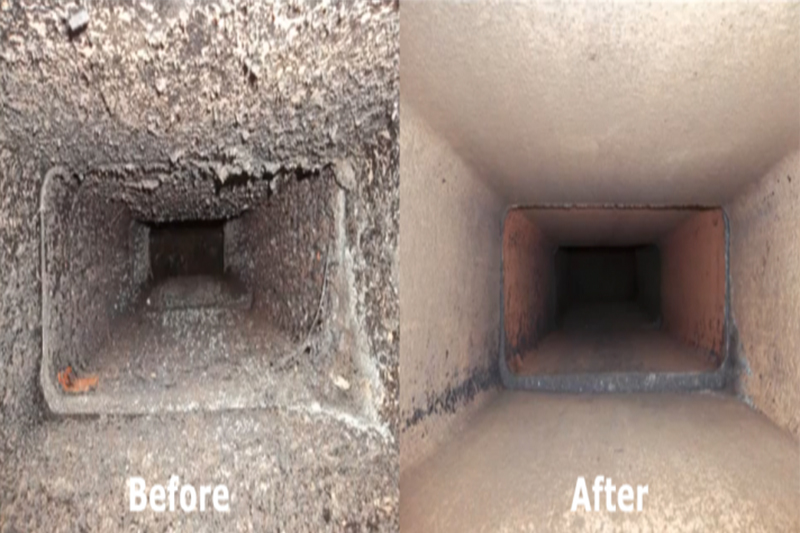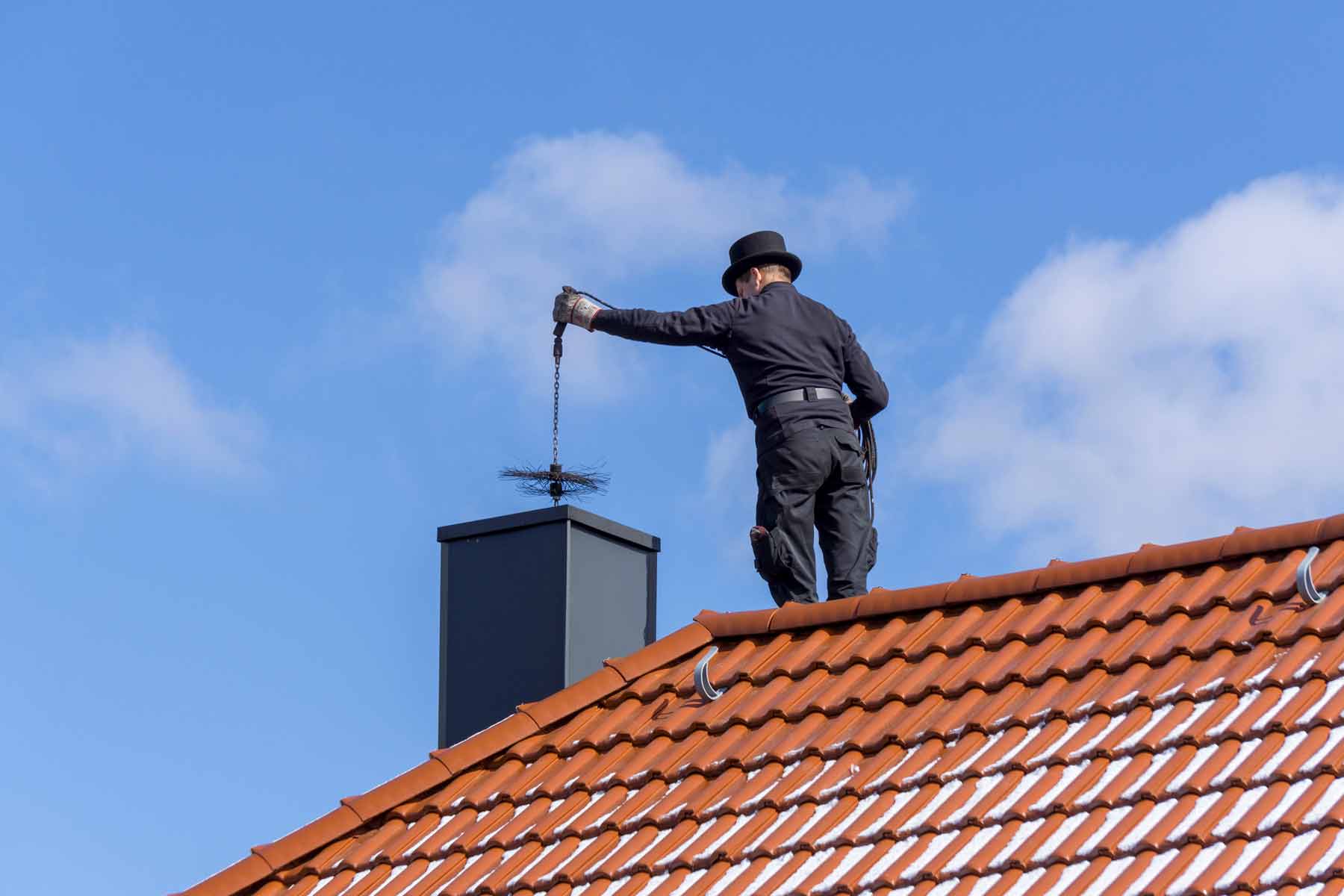Leading Chimney Clean Company Fremont Specialists: Maintaining Your Fire Place in Prime Problem
Leading Chimney Clean Company Fremont Specialists: Maintaining Your Fire Place in Prime Problem
Blog Article
Why Routine Chimney Cleansing Is Vital for Home Safety And Security
Regular chimney cleansing is an often neglected yet vital aspect of maintaining a safe and secure and risk-free home setting. While it may not be the most glamorous or interesting job on your to-do checklist, disregarding chimney maintenance can have major effects. The buildup of residue and creosote in your chimney can pose a substantial fire risk, while inadequate air flow can result in the potentially dangerous dangers of carbon monoxide gas poisoning. Additionally, normal smokeshaft cleaning can aid prolong the lifespan of your smokeshaft, conserving you from costly repair work or replacements down the line. Exactly how precisely does chimney cleaning contribute to home safety and security? Allow's check out the factors behind this important upkeep job and find the pointers for correct chimney care that every home owner need to recognize.
Importance of Routine Chimney Cleansing
Regular smokeshaft cleaning is critical for keeping a effective and risk-free home environment. With time, creosote, a highly flammable material, accumulates inside the smokeshaft (Chimney Clean Company Fremont). This deposit is a by-product of shedding timber and can accumulate on the inner wall surfaces of the smokeshaft. It can pose a serious fire hazard if left unattended. Routine cleaning removes this creosote accumulation and decreases the danger of smokeshaft fires.
In enhancement to stopping fires, normal smokeshaft cleansing also makes sure the effective operation of your home heating system. When creosote builds up, it restricts the air flow via the chimney, leading to bad burning and decreased home heating effectiveness.
Additionally, a tidy chimney advertises excellent indoor air quality. As the smokeshaft ends up being clogged up with creosote and particles, it can impede the correct venting of damaging gases, such as carbon monoxide.
Fire Danger: Build-up of Residue and Creosote
The accumulation of soot and creosote inside the chimney presents a substantial fire danger, as it can spark and trigger a possibly devastating smokeshaft fire. Residue is a black, carbonaceous compound that is developed when timber or nonrenewable fuel sources are shed. It includes great bits that can easily end up being airborne and settle inside the smokeshaft. In time, these fragments build up and form a layer of soot. Creosote, on the various other hand, is a sticky and extremely combustible material that is generated when timber or fossil fuels are shed at lower temperature levels. It is a by-product of incomplete burning and can adhere to the internal wall surfaces of the smokeshaft.
Both soot and creosote are very flammable. When a fire is lit in the fire place or cooktop, the heat and flames increase up the smokeshaft. These materials can produce a smokeshaft and ignite fire if there is a significant build-up of soot or creosote. The extreme warmth created throughout a smokeshaft fire can cause the smokeshaft to split or collapse, bring about a possible home fire. Additionally, the flames and sparks from the chimney fire can escape with the chimney cap and spark the roofing or bordering flammable materials.

Routine smokeshaft cleansing is crucial to get rid of the accumulation of soot and creosote and minimize the risk of a chimney fire. A professional smokeshaft sweep will make use of specialized brushes and tools to thoroughly cleanse the chimney, getting rid of any type of accumulated debris. By keeping the smokeshaft totally free and tidy from soot and creosote, homeowners can make certain the safe and reliable procedure of their fire place or stove, while likewise shielding their home from the dangers of a chimney fire.
Poor Ventilation and Carbon Monoxide Dangers
Not enough air flow in smokeshafts can position significant risks of carbon monoxide poisoning. Carbon monoxide (CO) is a colorless, odor-free gas that is generated when fuels such as oil, gas, or wood are shed. When smokeshafts are not effectively aerated, carbon monoxide can accumulate and leak into the living spaces of a home, leading to possibly deadly circumstances.
Among the main root causes of bad chimney air flow is the buildup of particles, such as soot and creosote, which can block the flue and limit the circulation of air. This can result in insufficient burning and the manufacturing of greater levels of CO. In addition, a smokeshaft that is not frequently cleansed can have a buildup of various other blockages, like bird nests or leaves, additional hindering the appropriate air flow of harmful gases.
The results of carbon monoxide gas poisoning can be subtle and quickly misinterpreted for other diseases, such as the influenza. Symptoms may include headaches, wooziness, tiredness, confusion, and nausea or vomiting. Extended exposure to high levels of carbon monoxide can lead to unconsciousness, body organ damages, and also death.
Regular chimney cleaning and evaluation are important in keeping proper ventilation and minimizing the danger of carbon monoxide poisoning. By eliminating any blockages and making sure that the flue is clear, property owners can delight in a secure and healthy and balanced living atmosphere. It is suggested to have actually chimneys checked and cleaned a minimum of yearly by an More hints expert chimney sweeper to check over here make sure ideal safety and tranquility of mind.
Extending the Lifespan of Your Chimney
To ensure the longevity of your chimney, correct maintenance and treatment are important. Normal smokeshaft cleansing is not just vital for home safety and security but additionally for prolonging the life-span of your chimney. With time, creosote, soot, and particles can collect inside the smokeshaft, bring about numerous issues that can significantly decrease its life expectancy.
One of the main advantages of normal chimney cleaning is the avoidance of smokeshaft fires. If not gotten rid of, it can develop up inside the chimney and stir up, triggering a harmful and possibly destructive chimney fire.
In addition, normal chimney cleaning also assists to avoid blockages. When particles, such as fallen leaves, branches, and even small pets' nests, obstruct the chimney, it can hinder correct air flow and air flow. This can result in a build-up of hazardous gases, such as carbon monoxide gas, inside the home. By keeping the chimney clean and clear, you can ensure appropriate ventilation and decrease the threat of carbon monoxide gas poisoning.
In addition to stopping fires and obstructions, normal chimney cleaning can likewise recognize and deal with any possible damage or damage. By inspecting the smokeshaft throughout the cleaning procedure, you can capture any type of very early signs of cracks, leakages, or structural issues. Trigger fixings can be made to avoid further damage and why not find out more extend the life expectancy of your chimney.
Tips for Correct Smokeshaft Upkeep
For effective chimney maintenance, it is vital to follow a few vital ideas to guarantee the long life and security of your smokeshaft. These suggestions will certainly not just assist you preserve the effectiveness of your smokeshaft however likewise lower the risk of smokeshaft fires and various other possible hazards.
To start with, it is critical to have your smokeshaft checked and cleaned by an expert chimney sweeper at the very least yearly. A specialist will have the ability to identify any kind of prospective concerns such as creosote build-up, animal nests, or architectural damage that could pose a threat to your smokeshaft's performance and safety and security.
In addition to yearly assessments, it is vital to routinely examine and cleanse your chimney's flue and cap. The flue must be clear of any kind of particles or blockages that can limit airflow or cause smoke to support right into your home. The smokeshaft cap need to be in excellent problem, firmly affixed, and totally free of any splits or damage to stop unwanted guests such as birds or squirrels from entering your smokeshaft.
In addition, it is important to make use of dry and experienced timber for melting in your fire place. Damp or environment-friendly timber generates even more smoke and creosote, bring about a higher risk of chimney fires. In addition, stay clear of melting products such as trash, cardboard, or treated wood, as they can release harmful chemicals and damage your chimney.
Lastly, make sure that your smokeshaft is outfitted with a tough spark arrestor to stop embers and stimulates from leaving and potentially creating a fire. Chimney Clean Company Fremont.
Following these pointers for appropriate smokeshaft maintenance will aid make certain the security and durability of your chimney and give comfort for you and your family members.

Verdict
In conclusion, regular chimney cleansing is critical for keeping home security. By frequently cleansing and keeping your smokeshaft, you can expand its lifespan and guarantee the security of your home and family members.

One of the major advantages of regular chimney cleaning is the prevention of smokeshaft fires - Chimney Clean Company Fremont. The smokeshaft cap ought to be in great condition, safely affixed, and totally free of any kind of fractures or damage to protect against undesirable guests such as birds or squirrels from entering your smokeshaft
Report this page